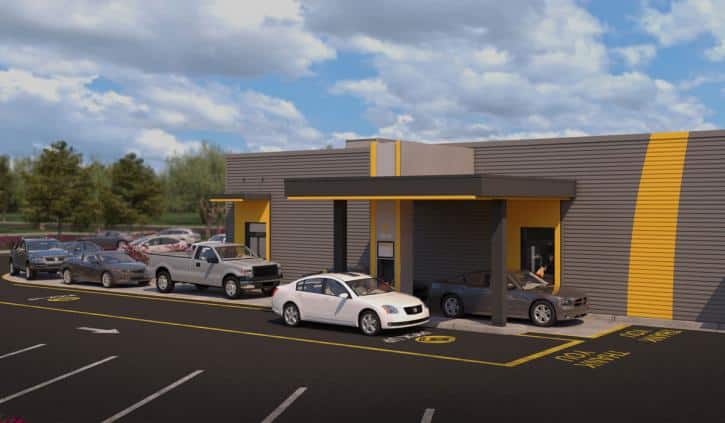
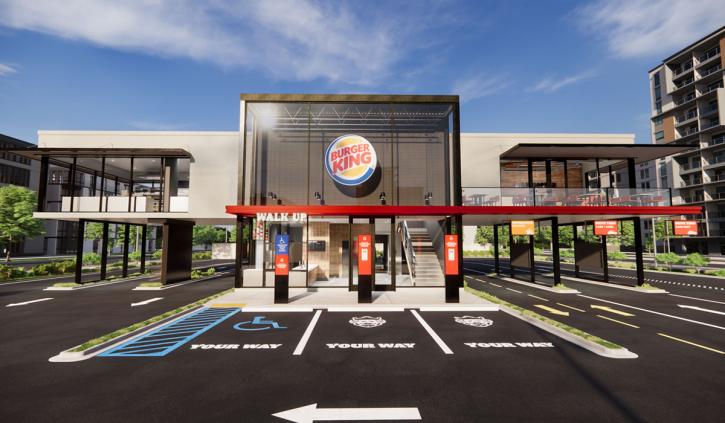
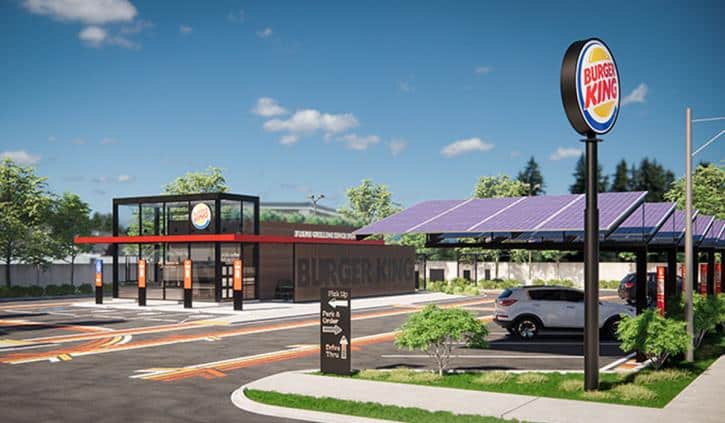

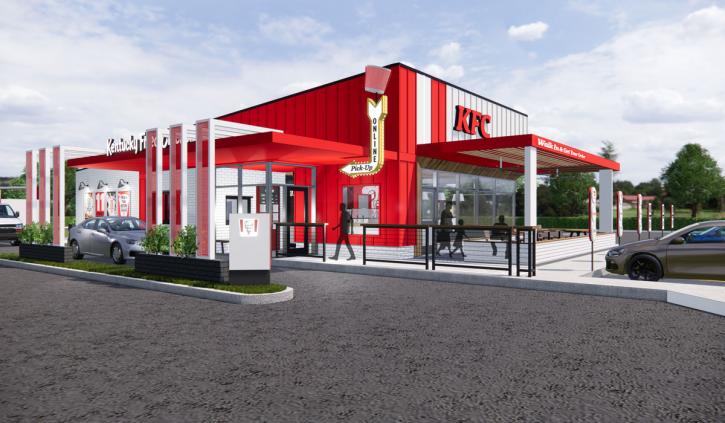
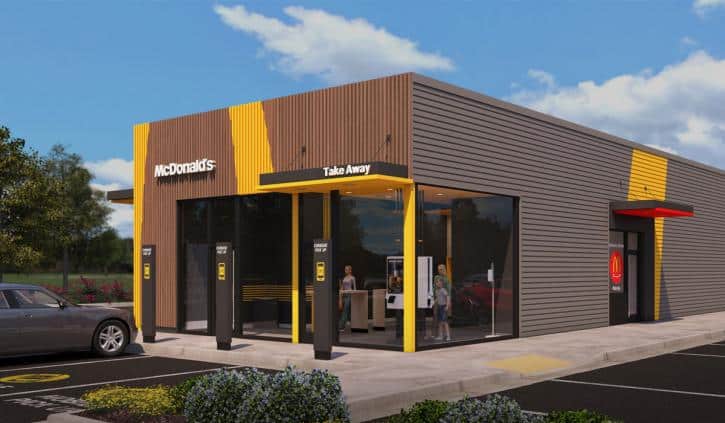
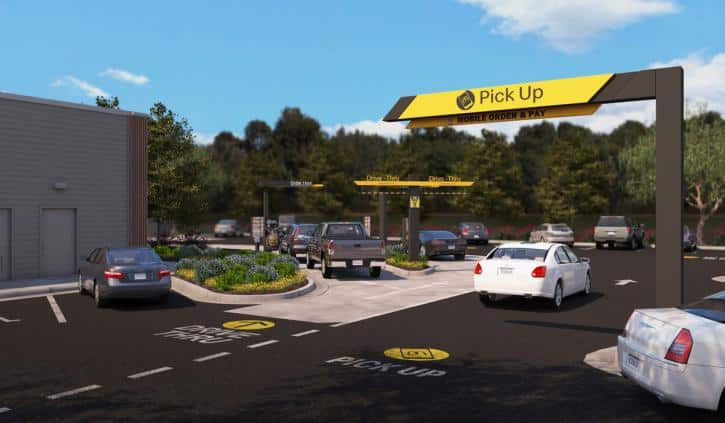
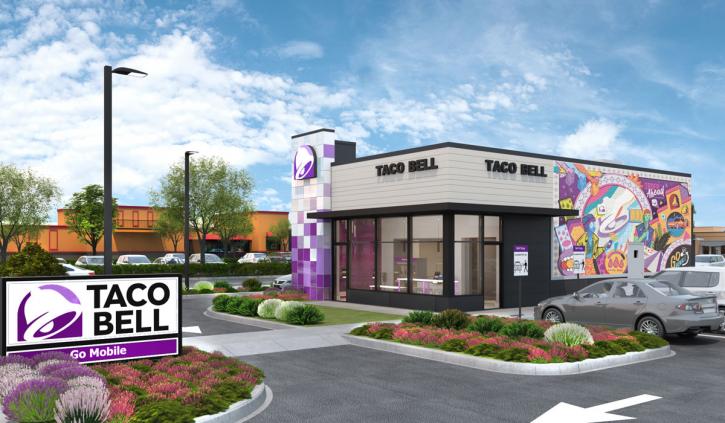
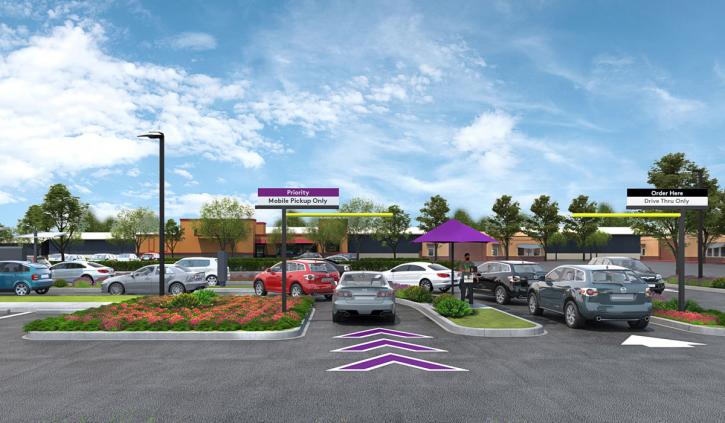
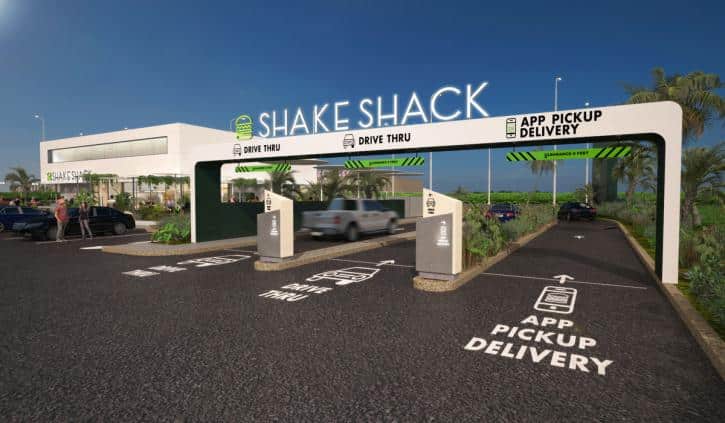
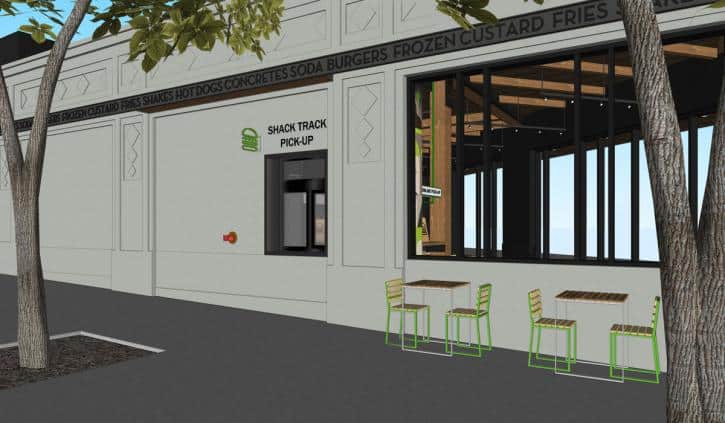
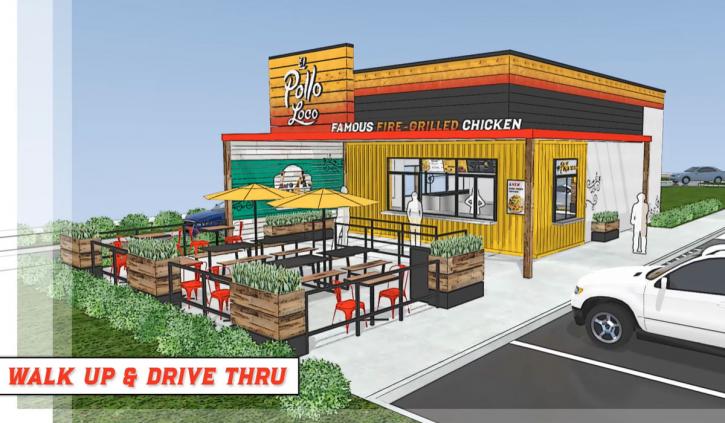
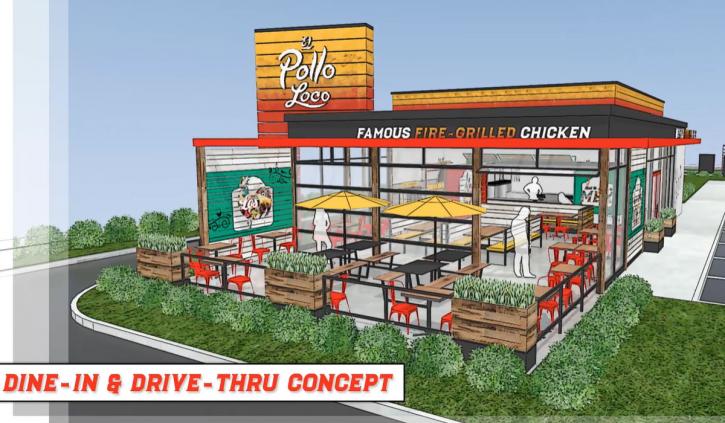


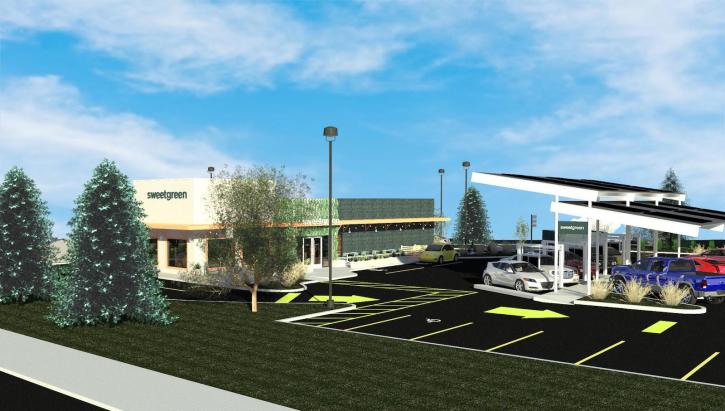
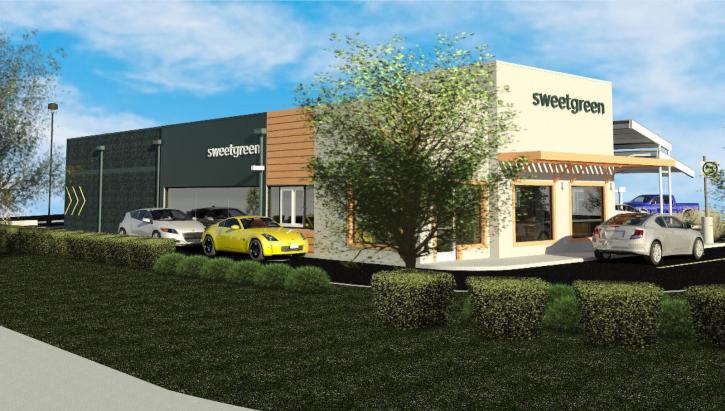
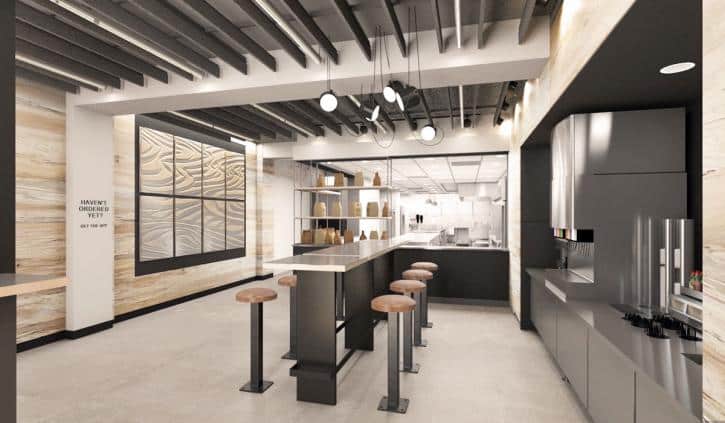
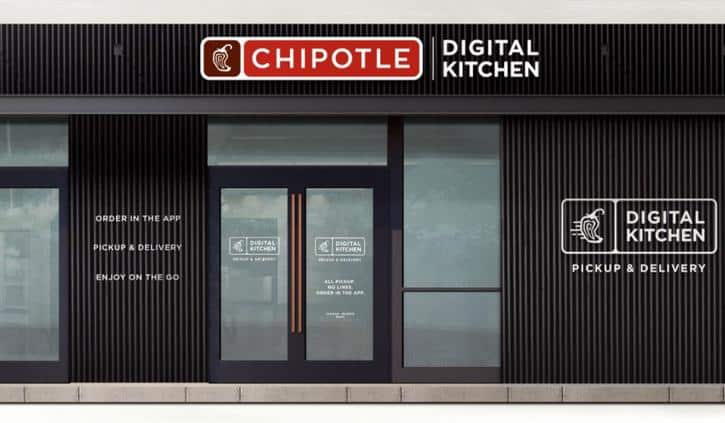
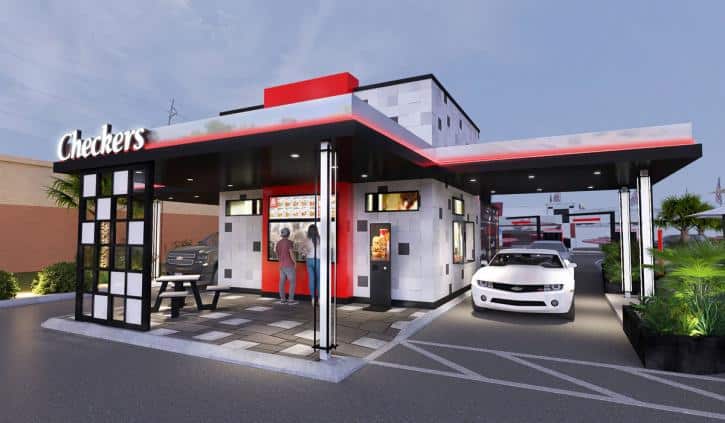
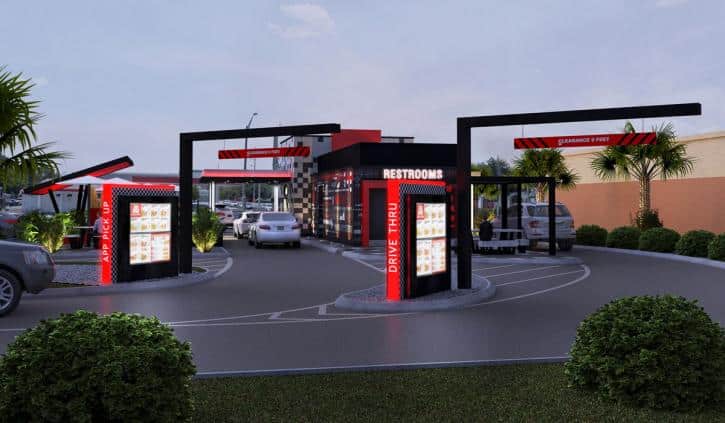
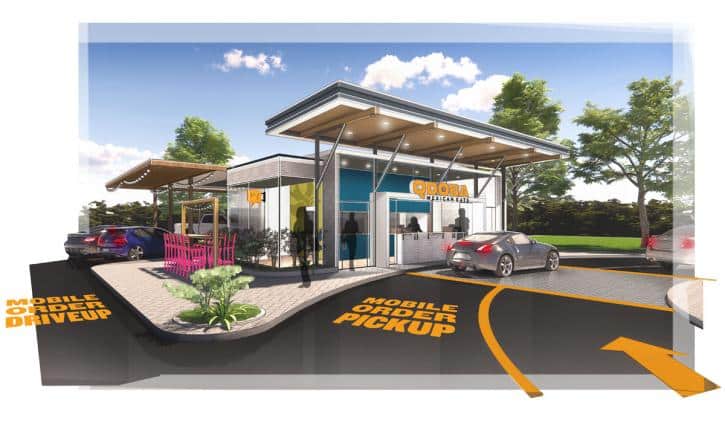
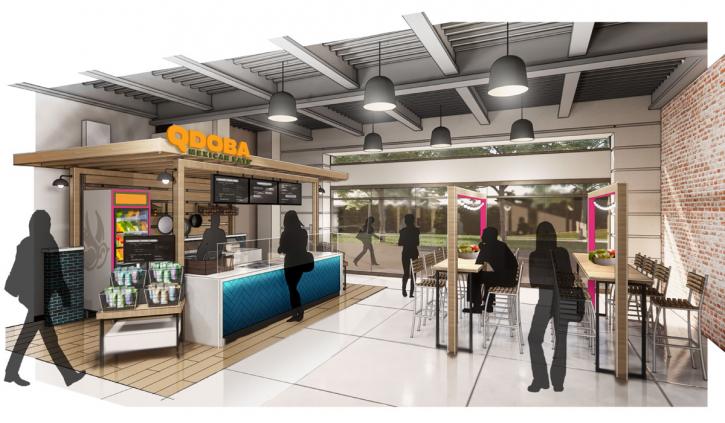
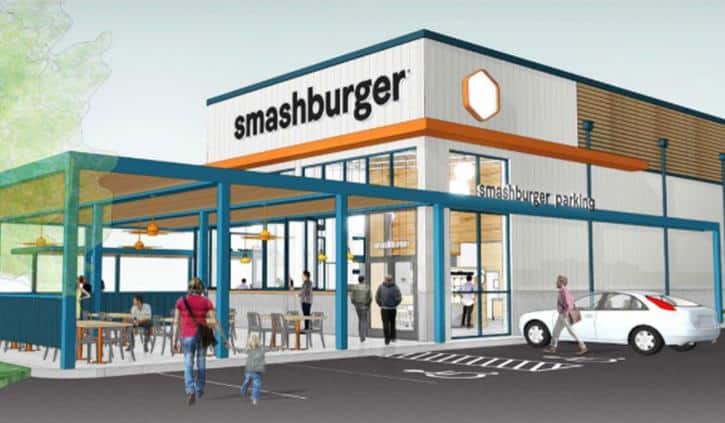
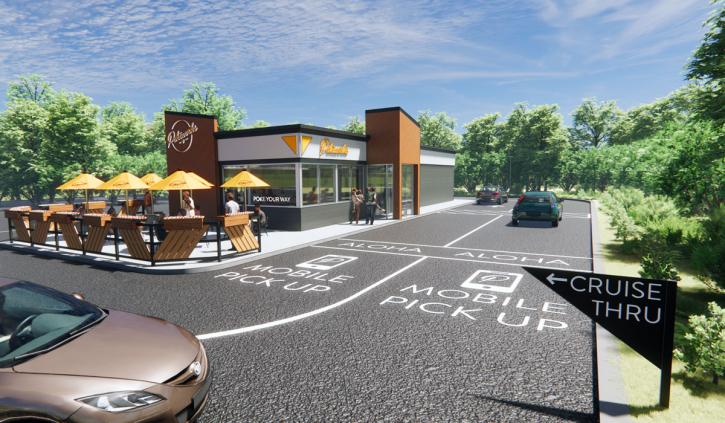
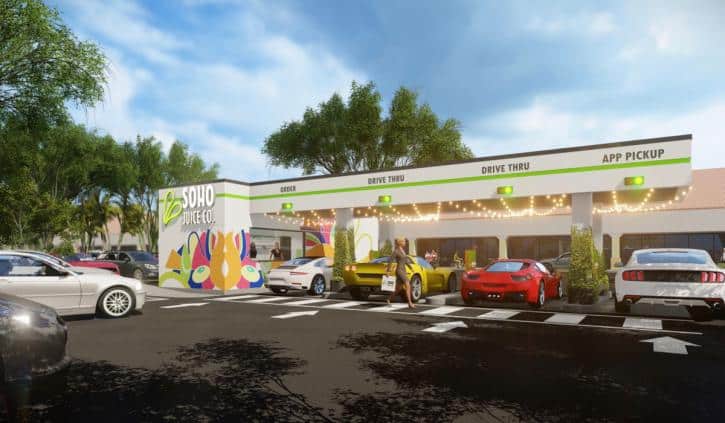
Before COVID-19, the notion of a major fast-food chain dropping a refreshed prototype was likely a multi-year ideation process. And it was significant news. McDonald’s Experience of the Future model, for instance, was one of the biggest construction projects in sector history. Subway’s Fresh Forward design was one of 2017’s most-read stories. Today, though? Not only are restaurants unveiling prototypes seemingly by the week, but the models aren’t simply updated takes on old classics; They’re completely reimagined venues with features that would have been laughed out of the boardroom before. Things like conveyor belts, drive-thru-only stores, triple-lane drive-thrus, and entire configurations dedicated to mobile ordering
But this is the arena restaurants find themselves in today, thanks to COVID. Years of innovation compressed into months. “Future trends” becoming survival tactics. The good news for quick-serves is COVID was more of an accelerant than a true disruptor, like it was for sit-down dining. So it gave brands a chance to serve customers in ways they clamored for, just a lot sooner than anybody expected. Convenience. Accessibility. Loyalty. Frictionless ordering. Integrated design. These are the present realities as restaurants prepare for life after coronavirus and a customer more digital-ready than ever.
Here are some restaurant of the future models to come out of the pandemic so far.
Note: If viewing on desktop, please click the arrow in the picture to see the next slide.
Burger King
Burger King’s suspended kitchen design might be the boldest of the bunch. It suspends the dining room above drive-thru lanes in an effort to reduce the building footprint, making it ideal for urban driving cities. Drive-thru guests have their order delivered from the suspended kitchen via conveyor belt system, and each lane features its own pickup spot.
This specific design features a triple drive thru, with a dedicated lane for delivery drivers. Guests who want to dine in can access the dining room and covered outdoor seating situated above the drive-thru entrance. In all, it’s a 100 percent touchless experience.
Other Burger King designs center on flexibility and convenience. Customers can park in a drive-in area under solar powered canopies. There, they can place orders through Burger King’s app by scanning a QR code at their parking spot, and have food brought to their cars. Advance orders placed through Burger King’s app will also feature dedicated parking spots labeled “curbside delivery.” Guests can notify restaurants upon arrival through the app as instructed on the parking signs.
Some other features include pickup lockers, coded and facing the exterior of the restaurant. The food goes straight from the kitchen to the lockers. One of the new design options replaces Burger King’s traditional indoor dining room with a shaded patio featuring outdoor seating for customers who prefer to dine on-premises.
Just in terms of the drive thru, the are prototypes with either double or triple drive-thrus options. Both feature digital menuboards and merchandising. Burger King said the multi-lane ordering and pickup adds will expedite the process, while a living wall frames a guest’s view into the kitchen interior, complete with Burger King broiler branding. Additionally. an external walk-up window on the glass façade will be an alternative ordering point for takeout.
KFC
The Yum! Brands chicken giant unveiled its “Next Generation Prototype” in mid-November. The exterior of the new model offers a modern take on the KFC signature red and white stripes (center to the previous American Showman model). It also features a brightly lit red bucket that directs customers to the new digital cubby system for online and pickup orders.
Kind of like pickup shelves, there will be a digital single-entry-point cubby system for mobile and delivery orders. KFC said these will create less contact between employees and customers as the order is delivered directly from the kitchen to the cubbies for ease of operation. It’s akin to pickup shelves, in terms of how it erases the handoff process. Delivery drivers as well as guests will access the feature.
Additionally, expect to see dedicated parking spots for curbside delivery and defined parking and signage for delivery drivers to collect online orders.
Inside, KFC will boast self-service kiosks to aid personalization at the order point and drive higher check. One of the locations, or an “express store” doesn’t feature a dining room and is roughly 1,800 square feet. Generally, though, KFC is looking at 1,800 or so square-feet locations with outdoor seating and smaller dining rooms, with added options for off-premises business.
McDonald’s
McDonald’s has several venues in the works. One is a store built around new express pickup technology that will alert employees to prep orders when customers are nearby. There will also be dedicated parking spaces to ensure fast pick up. There’s also an express drive thru where guests will find a new lane that allows them to skip the line if they’re using McDonald’s app. Less waiting, hotter food, the company said.
Fast food’s top earner is also working on a smaller restaurant footprint that focuses exclusively on efficiency, featuring drive thru, takeaway, and delivery with limited or no dine-in seating.
Customers’ desire for convenience, speed, and ease will only grow, and we’re ready for that. We’re taking steps to accelerate our phenomenal drive-thru advantage,” said Mason Smoot, SVP and chief restaurant officer. “… We know better than anyone what drive-thru customers care about. It starts with speed of service.”
Another feature threading across these designs is easy ordering and payment ID. McDonald’s is developing ways to streamline transactions through automated ordering and payments made by identifying customers at the display screen.
Taco Bell
The brand’s “Go Mobile” prototype features five main updates built around digital adoption. Firstly, it’s smaller to improve ROI and let digital transactions do the heavy lifting. The Go Mobile store is just 1,325 square feet compared to the 2,500 square feet typical Taco Bell boxes average. There’s a double drive thru with a new priority pick-up option for consumers who order via the app. The new lane will supplement the existing, traditional lane.
Taco Bell is also fitting the unit with “smart kitchen” technology integrated with its app. Namely, the Go Mobile restaurant can detect when guests arrive and suggest the quickest route for a seamless experience. Like other restaurants featured so far, Taco Bell Go Mobile visitors will have the option to receive their order via contactless curbside pickup—“another convenience alternative that modern consumers are looking for,” the company said.
Another standout focus of Taco Bell’s restaurant will be “bellhops.” In an effort to streamline the ordering experience, the store will include tablets in drive-thru lines and curbside pickup, both of which will be handled by a concierge service of employees, termed “bellhops.” Starbucks recently noted a plan to introduce handheld tablets in its drive-thru lines so employees can take orders upon arrival and boost throughput and overall perception—something Chick-fil-A and In-N-Out Burger have deployed for years.
“With demand for our drive-thru at an all-time high, we know adapting to meet our consumers rapidly changing needs has never been more important,” Taco Bell president, global COO, Mike Grams, said in a statement. “The Taco Bell Go Mobile restaurant concept is not only an evolved physical footprint, but a completely synchronized digital experience centered around streamlining guest access points. For the first time, our guests will have the ability to choose the pick-up experience that best fits their needs, all while never leaving the comfort of their cars.”
Shake Shack
Shake Shack’s design is among the biggest changes. Simply because the brand has never opened a drive thru before. The prototype is a showstopper triple-lanes experience with plenty of access points. The first will open in Orlando; five to eight are scheduled to open across the U.S. by 2022. CEO Randy Garutti said the brand has a lot to learn about drive thru, but that it’s committed to that learning. One of the goals is to not only provide convenience, but to attract consumers to the dine-in experience. “It’s not just a box where you go around and get your food,” Garutti said. “But for those times I need that convenience, it’s there.”
Shake Shack’s footprint evolution extends well beyond the drive thru. Eight walkup windows—both new and conversions—opened in 2020, and more are planned for this year. One Colorado store even includes a separate entrance and vestibule area for digital and delivery pickup. In addition, last year a Shack Shack in Vernon Hills, Illinois, was converted into the first drive-up window store. About five more are planned for 2021, including one in Danbury, Connecticut. Shake Shack is also planning urban-based digital stores that have small interiors to decrease investment costs, but also experiential outside dining.
El Pollo Loco
The chicken chain’s “Restaurant of the Future” features a modern interpretation of the brand’s heritage and strength, including images distinct to Los Angeles and the El Pollo Loco L.A. Mex brand. The company introduced two versions: One is fully focused on driving business off-premises and features a takeout window, dual drive thru, dedicated curbside pickup parking spaces, and patio seating. There’s no indoor dining room.
More on El Pollo Loco’s design
The second touts a dual drive thru, dedicated curbside pickup parking spaces, but a “smaller-than-typical” dining room that opens up to a large patio through garage style doors. Both center on an enhanced digitized experience, including cubbies for mobile to-go orders, double drive thrus with digital menuboards, and GPS-enabled curbside pickup. The features integrate with El Pollo Loco’s mobile app.
Details throughout El Pollo Loco’s design honor the brand’s history, like cleaver door handles (a nod to the fact chicken is cut to order) and turning fork chandeliers, which repurpose a tool of the trade used by the chain’s “Grill Masters.” Murals, imagery, and city maps evoke the brand’s 40-year LA roots on the interior and exterior. l Pollo Loco said the units are being built this quarter and will land in 2021.
More on El Pollo Loco’s design
Del Taco
Del Taco’s “Fresh Flex” prototype expands real estate potential for the brand and helps lower net investment costs, the company said, as well as provide “ultimate convenience for guests and [optimize] operational efficiencies.”
“Continuing to adapt and evolve is the lynchpin for Del Taco to remain ahead of the curve in the restaurant industry,” CEO John Cappasola said in a statement. “Our new prototype solidifies our relationships with new and longstanding fans by offering them the most efficient, convenient and enjoyable environment possible. Equally as powerful, ‘Fresh Flex’ propels broader growth opportunities.”
There are three pillars to consider— restaurant accessibility, speed of service, and brand transparency. The design features contactless third-party delivery pickup stations, double drive-thru lands dedicated to mobile orders or delivery driver pickups, and dedicated parking lot areas for those who want to park, eat, and go. The kitchen was also redesigned to optimize labor.
Del Taco collaborated with hospitality design firm MY Studio ID on the prototype. The exterior and interior is redesigned, too, with a focus on capturing “Fresh as Del” positioning. The building features back-lit towers and a vibrant color palette. Inside, built-in freshness coolers provide a transparent display of Del Taco’s ingredients, prepared daily. Additional visibility extends to a working kitchen where guests can see employees in action—slicing avocados, grating cheddar cheese, grilling chicken and carne asada, and so on.
Del Taco said the new store design will unfold via multiple buildout options to maximize growth through a “Menu of Venues” strategy the company hinted at previously. “Fresh Flex” will vary in size from 1,200 to 2,400 square feet. This includes small footprint drive-thru only models, drive-thru endcaps, conversions, and freestanding sites. The drive-thru only version is listed at less than 1,200 square feet.
Sweetgreen
The Los Angeles–based fast casual announced in December that it would open a new restaurant in Highlands Ranch, Colorado, in winter 2021 that has both drive-thru and drive-in elements. The drive thru will be for digital-order pickup, while the drive-in will offer guests a dedicated concierge and in-car dining. There will also be an outdoor patio for guests who wish to leave their car and dine on-site.
Other design components of the new Sweetgreen prototype that seek to enhance the traditional quick-service drive thru include rooftop solar panels, large windows that allow guests to see the kitchen and prep areas, and tactical wayfinding that helps create a seamless experience. Meanwhile, ivy-lined walls and a dynamic roof design for the car kiosk further incorporate Sweetgreen’s fresh, modern touchpoints.
Sweetgreen’s new restaurant builds upon loyal customers’ already very tech-forward engagement with the brand. Even before COVID, more than half of Sweetgreen’s orders were placed through the company’s app or website. This prototype further removes friction from the ordering process, the spokesperson says. That’s helped along by details like multi-channel ordering, order sequencing, enhanced location management for store operations, and two-way communication for operators.
The design also reflects Sweetgreen’s commitment to enhancing the digital business, opening up a new frontier for serving digitally placed orders. The brand previously innovated with its digital capabilities earlier this year when it announced its Collections platform, a digital-only menu that offers guests a list of menu categories designed to better steer their purchasing decisions when ordering online or through Sweetgreen’s app. Lists will be added and adapted based on seasonal items and availability, and will eventually include menu recommendations unique to each user.
Chipotle
In early November, unveiled its first digital-only restaurant. Called the “Chipotle Digital Kitchen,” it opened just outside the gate of the military academy in Highland Falls, New York. It offers pickup and delivery only, and will allow Chipotle to enter more urban areas that typically wouldn’t support a full-size restaurant, the company said. Additionally, it will allow for flexibility with future locations.
The company said the build is unique “because it does not include a dining room or front service line.” Guests must order in advance via the fast casual’s website, app, or through third-party delivery partners. Orders are picked up from a lobby designed to include all of the sounds, smells, and kitchen views of a traditional Chipotle, the company added. It will also service large catering orders available for pickup in a separate lobby with its own dedicated entry.
A Chipotlane-only store is in the works, too.
The Digital Kitchen incorporates innovative features that will complement our rapidly growing digital business, while delivering a convenient and frictionless experience for our guests,” Curt Garner, chief technology officer of Chipotle, said in a statement. “With digital sales tripling year over year last quarter, consumers are demanding more digital access than ever before so we’re constantly exploring new ways to enhance the experience for our guests.”
The brand also opened a new “Cultivate Center” in Irvine, California, which is located minutes from corporate HQ. The new 22,000-square-foot facility features the same natural ascetic with ecofriendly materials and designs found in Chipotle’s restaurants. The Center is also home to Chipotle’s official test kitchen and includes a production studio for filming commercials and developing creative concepts as well as a room for restaurant training and development. It’s home to the “Center for Excellence for Design and Construction” as well and houses a fully equipped development lab, metal cutting, and woodworking machinery to build and test new prototypes before roll out. Additionally, there’s a consumer research center to allow for focus groups. The conference rooms and event spaces are built for board meetings, group gatherings, and special events.
Checkers & Rally’s
Checkers & Rally’s “Restaurant of the Future” is part of its reenergized five-year growth plan fueled by a recent $20 million capital injection from owner Oak Hill Capital Partners IV. Construction of the first, in Lakeland, Florida, is already underway, with an opening date set for summer. The new layout modernizes Checkers’ iconic look and offers elements such as walk-up windows, patios, and drive thrus. The interior will be arranged for greater crew comfort, the company said, easier order taking, and more efficient service.
More on Checkers’ recent growth plans
Checkers also recently released a new mobile app and loyalty program tailored to guests. The brand has surged of late, with same-store sales rising 7.5 percent in 2020. Checkers consists of 572 franchises and 264 company-run stores across 35 states and Washington, D.C. CEO Frances Allen recently said no market is saturated and Checkers has 3x white space in current areas.
More on Checkers’ recent growth plans
Qdoba
The Mexican fast casual developed a whole suite of new footprints and floor plans, including drive-thrus, pickup windows, and smaller boxes. The chain currently has 14 open drive-thru units, and anticipates that number reaching 24 before the end of 2020. The restaurant is also interested in 1,000-square-foot takeout units in urban areas and ghost kitchens.
“Next year that is clearly a huge opportunity that we’ll be investing in,” CDO Tim Welsh said of 2021. “So we’ve developed a new footprint, new format or prototype around the drive-thru, but we’ve also developed some smaller footprints. … I mentioned we redeveloped our app last year and that has given us the ability to convert a lot of our customers over to the app and lean into the digital platform. That will continue to be a big piece of business, both from in-store pickup, and also adding walkup pickup windows to many of our locations. It’s just really focusing on the quality of our food and accelerating convenience.”
As seen above, Qdoba has a pretty interesting take on a what a ghost kitchen could look like. Overall, since March, Qdoba has opened 15 restaurants, and it’s planning to open more than 15 before the end of the year. There’s about 40 in the pipeline for 2021, but as the brand brings on new partners and investments, Welsh says that number may grow. Ultimately, Qdoba wants to reach a pace of more than 100 units per year.
Target markets include Arizona, Southern California, Florida, Georgia, Ohio, Nevada, New Jersey, New York, Texas, New England, and Pennsylvania. Welsh expects real estate to be favorable as COVID continues to desaturate the restaurant industry.
Smashburger
Pivoting from a primarily dine-in model to increased takeout offerings, COVID has accelerated Smashburger’s efforts to make the brand more accessible to its guests digitally, it said.
Seeking to open over 40 new Smashburger locations in 2021, the brand unveiled new restaurant prototypes with a modern look and feel, and an emphasis on food cues by creating an open kitchen concept so customers can see the culinary process. This new restaurant model will offer a more approachable dining experience through drive up or virtual drive thru, new cubby systems that will keep food hot until customers drive up to retrieve their meals—creating a fully contactless experience and socially distanced outside setting.
This includes reassessing the brand’s real estate portfolio and focusing on aggressively opening new stores in areas like Brooklyn, Chicago, New York and Washington D.C., Smashburger said. Deploying a hub and spoke approach, Smashburger said it is strategic real estate decisions by opening new restaurants in high-volume foot traffic areas, with a focus on suburb locations.
Additionally, it’s revamping its restaurant design and style, emphasizing an elevated dining experience with interiors celebrating each local city.
Pokeworks
The chain dropped its first “Cruise-Thru Lane”—a mobile order pick-up lane developed with on-the-go guests in mind. Customers will be able to order ahead online and pickup without having to leave their vehicles. The first Cruise-Thru Lane is set to debut in Knoxville, Tennessee in the spring of 2021.
Customers can place a mobile order on the Pokeworks Rewards App prior to arriving. Whey they get there, they will be able to skip the in-store line and cruise right up to the window to pick up their order quickly and efficiently.
The brand plans to integrate Cruise-Thru Lanes into its future restaurant build-outs—primarily in suburban areas. “It’s our responsibility to listen to our guests and their needs while providing a solution without losing sight of the essence of our brand, which is the epitome of what the Cruise-Thru Lane is for Pokeworks,” said Peter Yang, chief development officer and co-founder of Pokeworks. “We look forward to testing the prototype and continuing to grow as we continue to serve communities nationwide.”
SOHO Juice
The vegan friendly and allergen focused marketplace planned its first SOHOexpress within the Lake Mary Center in Lake Mary, Florida. It’s a digital-only concept where all the ordering is done in advance or on site through the brand’s online ordering platform. There will be no on-site consumption. The company plans to accommodate quick and efficient QR code ordering on site, advancing ordering mobile pick up and marketplace delivery pickup.” This is true contact-less pick up where customers never have to leave their car. To pick up orders, customers will simply pull into one of the multiple drive through lanes and a SOHO representative will bring the order out to their car,” SOHO Juice said.
“2020 has been a crazy year and we are beyond grateful for the support of our loyal customers as they’ve allowed us this opportunity to grow even during this very challenging environment,” said Justin Basil, founder of SOHO Juice Co.






